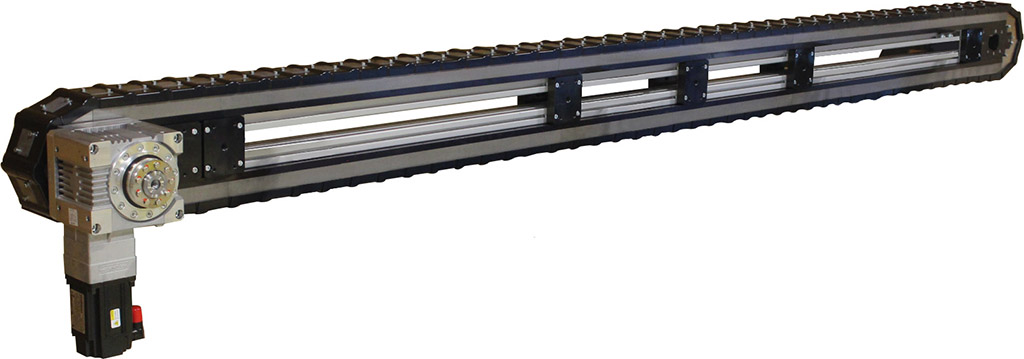Precision Conveyor Maintenance
No Comments - Leave a Comment

Precision conveyers, like the LFA series made by Motion Index Drives, feature a unique type of chain or a series of small link assemblies. Within each assembly is an aircraft-grade aluminum link with four custom cam followers (sealed) that provide guidance and high accuracy on a ground steel track mounted to the conveyor frame. A sleeve needle bearing is included in each link, and a steel shaft supports the followers.
When used in a clean room, the LFA precision conveyor requires no maintenance at all. But on typical factory floors, the track needs to be regularly cleaned using either a cloth or compressed air to blow off debris.
Link-assembly maintenance is minimal. Our engineering manager Marc Halliburton, recommends checking link tension on an annual basis where airborne matter is present. Accumulated debris near rollers can increase their friction and cause them to jam. This is especially relevant when the conveyor is located near a welding area. Airborne welding slag, which has sand-size particles, can settle in the rollers and slowly degrade them.
Belts will naturally flex somewhat over time however, in environments with frequent temperature fluctuations or high humidity, dry rot, or sidewall cracking, can be a problem. To confirm dry rot, loosen the belt enough to fold it over and visually inspect the belt’s underside.”
Fixed guideways for the conveying medium also need to be regularly checked. Typically made of ultra-high-molecular-weight polythene thermoplastic, the guideways are subject to constant wear and vibration. Regular visual inspection is recommended to ensure the guideway bolts are tight enough. Replacement is quick and easy.
Current draw is the main factor to focus on regarding the motor. End-users need to make sure that the conveyor’s variable frequency drive regulates this draw so it stays within tolerance specified on the equipment nameplate. Keeping a log of the measured values is a good practice.
Drive unit maintenance is quite simple. A good practice is to regularly inspect the unit for loose or missing fasteners that may have found their way inside.
Moving parts within the unit, like the sprocket and bearings, should be lightly greased as recommended by the manufacturer. Liquid grease is usually placed into a designated hole on the unit and then automatically dispersed to the components.
Frame inspection should also be a part of regular maintenance.. This task verifies which frame fasteners are properly tightened and which are loose. Often times, the head of each fastener will have a mark that matches a corresponding line on the frame. Misaligned marks indicate the fastener needs to be tightened.
Comments
No Comments - Leave a Comment

 Translate
Translate